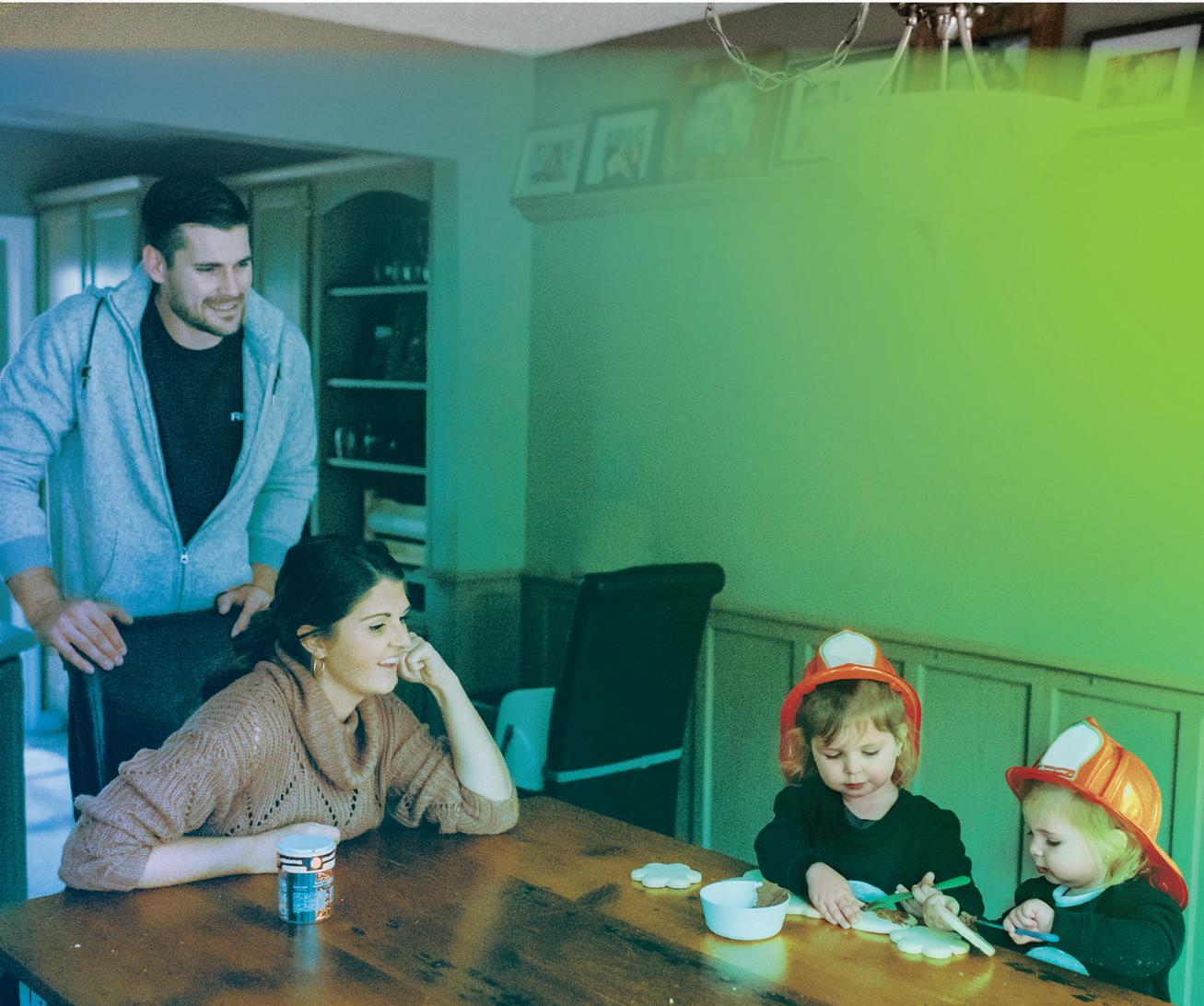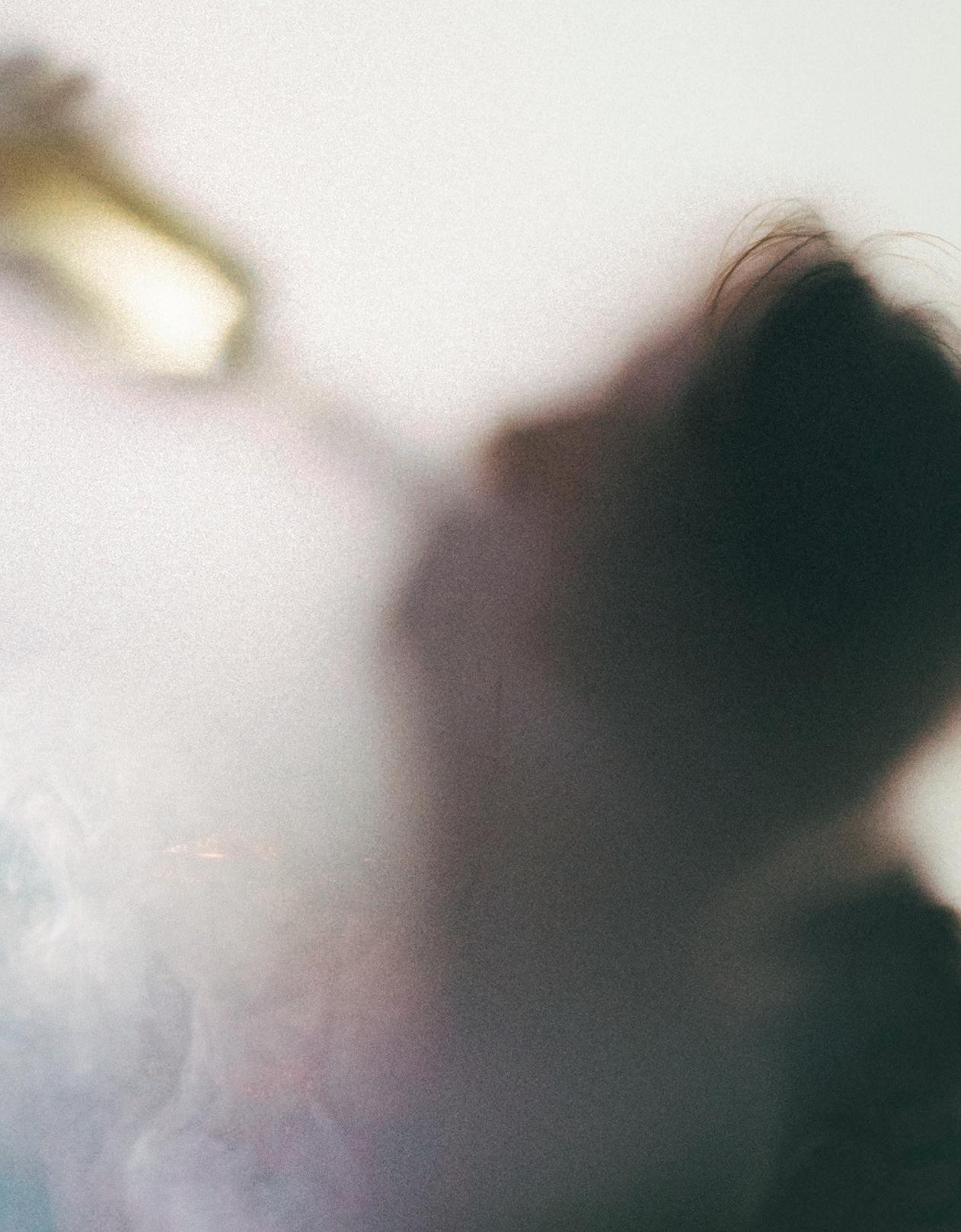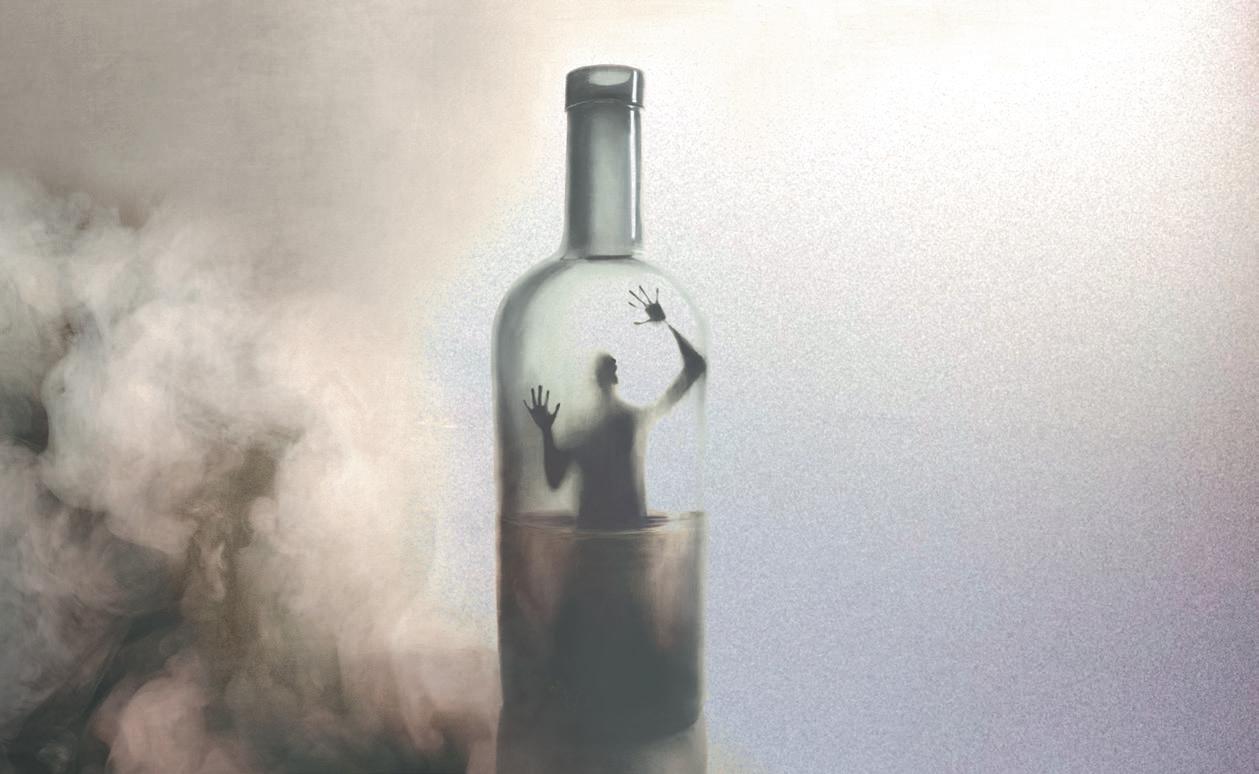
7 minute read
CRUISING FOR COUPLES CRUISING FOR COUPLES
Has it been far too long since you treated yourselves to quality time together?
Eager for a holiday where no one cooks, does dishes or even makes the bed?
A cruise checks every box, whether you opt for a wine-focused river cruise where every day takes you to a different vineyard or winery, or an ocean voyage where you loll by a shimmering pool and take shore excursions to island beaches and markets. The bliss lies in the totality of the service onboard. When neither of you has any responsibilities, there’s suddenly time to reconnect.
If you choose an ocean-going ship, one of the great treats will be the nightly live entertainment. In our day-to-day world, entertainment means either heating up dinner and burrowing back into Netflix or an expensive night out. Onboard a ship, you’ll not only have the luxury of choosing from a selection of restaurants but will also have a variety of included live entertainment ranging from musical revue shows to comedians, magicians, acrobats, singers, dancers and more. The lineup changes daily so you’ll feel as if you’re out on the town every night. Some of the best lines for entertainment and great dining include Holland America, Oceania, Celebrity, and Viking.
Expedition ships focus most attention on the daily shore excursions which often involve Zodiac (sophisticated rubber raft) trips for wildlife viewing, SCUBA diving or snorkeling, or hiking adventures. Night time entertainment is typically a presentation by an onboard expert who’ll explain what you’ve just seen or might hope to see in the coming days. Because you’re usually up early and have active days, you’ll head to bed early too and so won’t mind not having a casino or theater show. Some of the best expedition ship companies include Silversea, Ponant, National Geographic, and Adventure Canada. Some fabulous river cruise lines include Avalon, Scenic, Emerald and AmaWaterways.
BRINGING A GANG? BRINGING A GANG?
A cruise is a great way to gather a group of buddies or a collection of couples while leaving a bit of space in your togetherness. While you certainly can choose to sign up for all the same shore excursions, you don’t have to. Some friends may stay onboard to loll by the pool, while
Best Advice?
others head off to explore. Some might gather for dinner in the main dining room while others choose a specialty restaurant and have a romantic dinner for two. The options are endless and can offer exactly what’s needed to keep a group happy together – and apart!
Get some…advice that is. Whether you’re booking your first cruise or signing up for your twentieth, a conversation with a well-informed travel consultant is a great idea. They’ll sort through the hundreds of options out there to find the cruise that’s perfect for you. And the advice you’ll receive about promotions, special deals, new itineraries, ship upgrades and more will be invaluable.
Firefighters experience symptoms of depression, anxiety and sleep issues at a higher rate than the general population.* Alcohol increases these symptoms and creates additional risk for other serious health conditions.
Understand and address the mental and physical effects of the job, with strategies and resources that can improve your overall health.

MIXING ALCOHOL & FIREFIGHTING IS A
Deadly Cocktail
By Rick Markley, Science Alliance
IS HEAVY DRINKING LINKED TO WHAT’S ALREADY KILLING US?

IN THE 1960S AND 1970S, THE FUN DRUNK GUY WAS A STAPLE ON TV SHOWS.
The Andy Griffith Show’s wholesome hometown of Mayberry had Otis – the town drunk who got laughs by locking himself in jail when he’d had a snootful then letting himself out in the morning after he’d sobered up.
Most of Dean Martin’s stage and television comedy persona was built around him always being drunk and ready for debauchery. While he was rarely seen without a cocktail in hand, his children later claimed Martin’s drunkenness on stage was just an act and that his glass held only apple juice.
The truth about heavy alcohol use is far more sobering than entertaining. Hardcore drinkers are rarely as harmless and loveable as Otis and can, in fact, be a wrecking ball freewheeling through life. Those drink-induced antics are more than a few one-offs – they point to deeper troubles.
Though we’ve known for decades about alcohol’s gripping, addictive powers, understanding the nature of that addiction and how to best break it has been long debated.

Like Dean Martin, part of the firefighter mystique is that we are a bunch of hard drinkers. Unlike Dean Martin, we have actual scientific research showing there is truth to the myth – there’s more than apple juice in our glasses.
Two studies led by Science Alliance founder Dr. Sara Jahnke and her team at NDRI-USA showed that 45 percent of career firefighters reported heavy drinking (considered more than two drinks at one time for men, and more than one for women) and binge drinking (five drinks for men or four drinks for women over a two-hour period) over the previous month.
Volunteers were only slightly better, with 39 percent reporting heavy drinking and 45 percent reporting binge drinking.
Think this is only a guy problem? Think again.
Jahnke was also part of a team of researchers who looked at alcohol
WHAT MAKES A DRINK A DRINK?
When scientists talk about an alcoholic drink, they mean 14 grams of absolute alcohol. Here’s what that looks like in real life:
• ONE 12-OUNCE BEER AT 5 PERCENT ALCOHOL
• ONE 7-OUNCE MALT LIQUOR AT 7 PERCENT ALCOHOL
• ONE 5-OUNCE GLASS OF WINE AT 12 PERCENT ALCOHOL
• ONE 1.5-OUNCE SHOT OF DISTILLED SPIRITS AT 40 PERCENT ALCOHOL (80 PROOF) consumption among female firefighters. Overall, female drinking numbers closely followed those of male firefighters. Two interesting exceptions were that women were more likely than men to completely abstain from alcohol, but were also more likely to be heavy drinkers – they were less likely than men to be both moderate and binge drinkers.
“When nearly half of those in the fire service are drinking excessively, often to dangerous extremes, we have an institution-wide problem,” Jahnke says. “Our culture of heavy alcohol use is contributing to our own literal demise through acute and chronic illnesses affecting both body and mind.”
Heavy drinking will often lead to problems at work, relationship troubles with family and friends, legal issues and physical injuries. These are all documented and well-understood. It is also well understood that these drinkrelated life challenges only compound the stress that comes from being a firefighter. In short, we know drinking is a bad coping mechanism for stress and usually makes matters worse.
It is equally well known that excessive drinking will cause long-term health issues such as liver disease and will also wear down other vital organs already compromised by firefighting.
Like excess stress, alcohol abuse negatively affects heart health –cardiovascular events are a leading cause of firefighter death and injury. Dr. Robert Kloner, a professor of medicine at the University of Southern California says alcohol in excess “can cause high blood pressure and promote arrhythmias. It can cause cardiomyopathy where the alcohol is actually toxic to the heart muscle cells, and that can lead to heart failure.”
Equally disconcerting are the links researchers are now making between alcohol use and cancer. This news is especially disturbing when combined with results from large studies and analyses of smaller studies that show the firefighting community has as much as a 20 percent greater risk of developing cancer than does the general population.
In 2022 the World Health Organization’s International Agency for Research on Cancer gave the occupation of firefighting its highest classification, Group 1 carcinogenic to humans. That means simply being a firefighter is known, not just suspected, to cause cancer.
And that 20 percent greater risk gets a lot scarier when you dive into the weeds of specific cancers. The IARC singled out four types of cancer and showed the increased risk for firefighters and the even greater risk for firefighters who have more than 3.5 drinks at a time. Have a look at the box above.
ORAL, BUCCAL AND PHARYNX CANCER:
40 PERCENT GREATER RISK FROM FIREFIGHTING AND 83 PERCENT GREATER RISK WITH DRINKING.
ESOPHAGEAL CANCER:
39 PERCENT TO 59 PERCENT GREATER RISK FROM FIREFIGHTING AND 123 PERCENT GREATER RISK WITH DRINKING.
Take a moment to swallow the numbers above. Even in the best-case scenario for colon cancer, the risk is nearly 50 percent greater when you stir in heavy drinking. The worst case scenario can more than triple your chances of getting throat cancer.
“Be honest with yourself,” Jahnke says. “If you consider yourself a moderate or social drinker, do you believe 3.5 drinks in one night is heavy drinking? Probably very few of us would. And as the number of drinks go up past 3.5, so too do the chances of developing different cancers. We have to completely recalibrate the way we look at our relationship to alcohol if we want to cut our risk of cancer.”
There's more bad news for firefighters report that they smoke, even if only when they drink. Research has found there is a strong interaction between smoking, alcohol and cancer development. This mix particularly increases the risks of mouth and throat (oral cavity and esophageal) cancers.
Jahnke was part of a team of researchers who looked at the relationship between smoking and drinking among firefighters in 2015. They found that the firefighters in their study who smoked were seven
LIVER CANCER:
30 PERCENT GREATER RISK FROM FIREFIGHTING AND 54 PERCENT GREATER RISK WITH DRINKING.
COLON CANCER: times more likely to drink heavily and five times more likely to binge drink.
14 PERCENT TO 21 PERCENT GREATER RISK FROM FIREFIGHTING AND 25 PERCENT GREATER RISK WITH DRINKING.
While much of the research tying firefighter alcohol use to firefighter cancer is fairly recent, scientists have suspected there was a connection for decades. A 1989 study led by researchers at Johns Hopkins University found that daily alcohol consumption was associated with cancer-causing markers in firefighter blood tests. While that study focused on the cancer risks of smoking and eating char-broiled food, it noted that daily alcohol use may interfere with detoxifying enzymes that degrade carcinogens from products of combustion.
Even back then, it seemed alcohol was a compounding factor in the cancer risk firefighters faced.
“The causes of cancer in the fire service are multi-pronged,” Jahnke says. “We have to take control of as many variables as we can to put the odds of good health in our favor. Controlling alcohol consumption is as much a cancer-prevention measure as is wearing SCBA and cleaning turnout gear after a fire.”
Alcohol overuse may still be entertaining in some quarters, but aside from maybe comic Tig Notaro, nobody thinks having cancer is funny.










